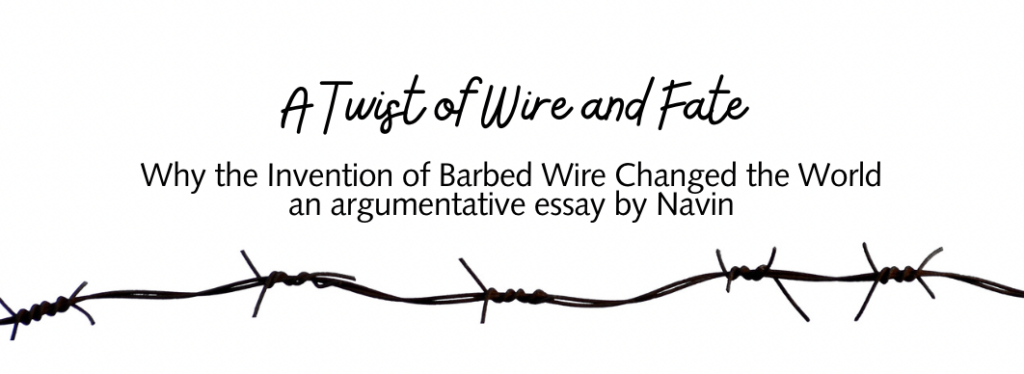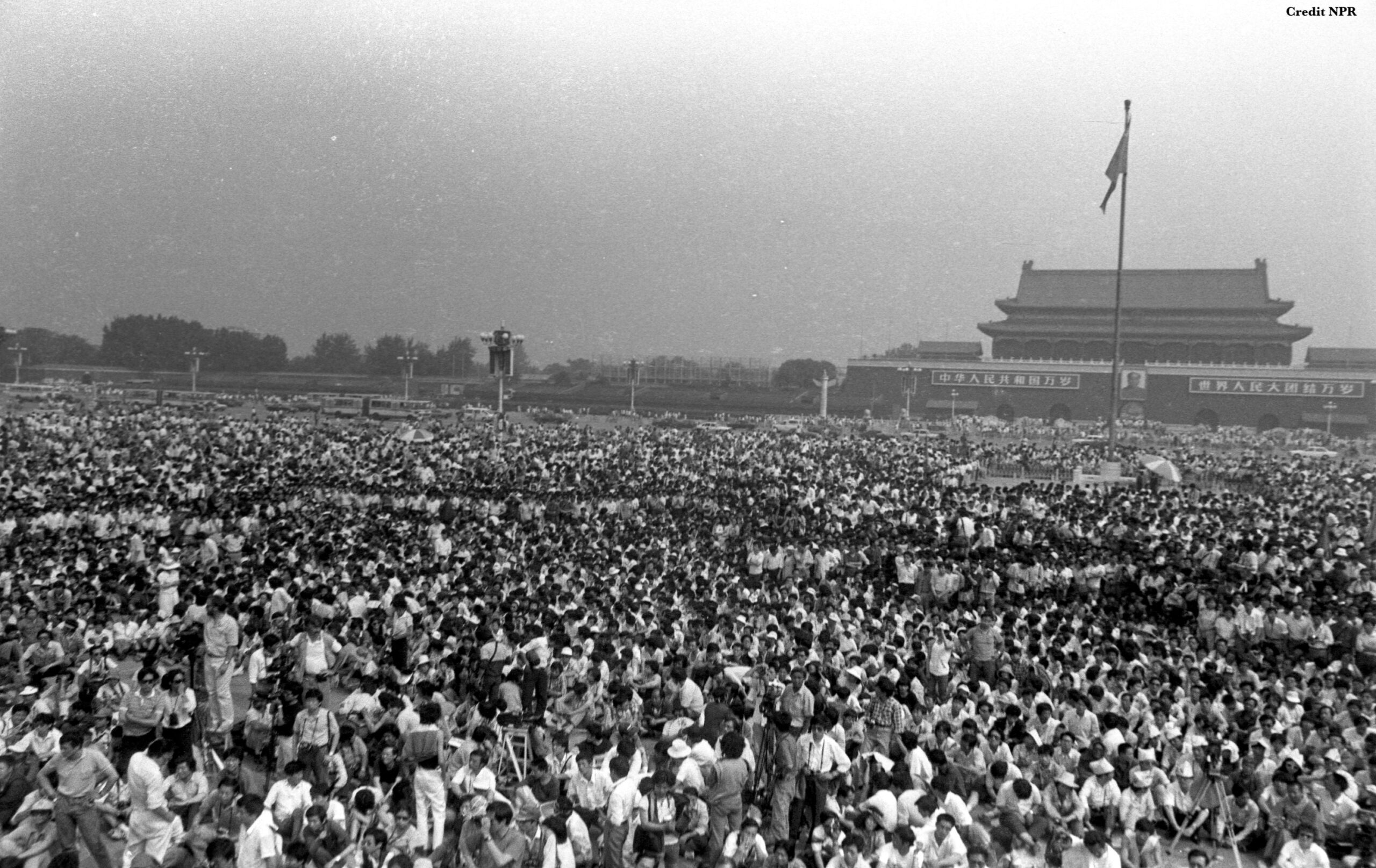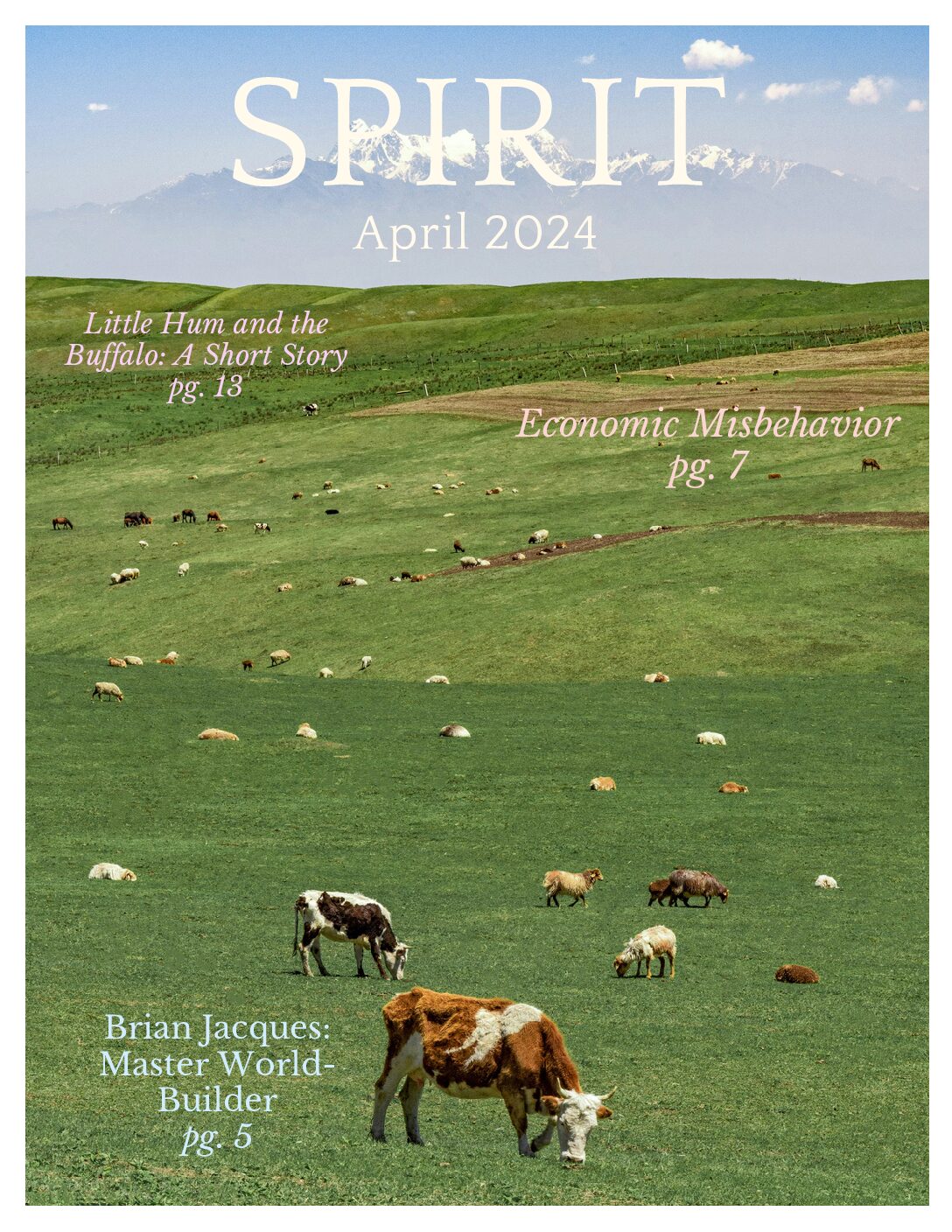A Twist of Wire and Fate


In William Shakespeare’s Henry V, King Henry V of England begins a gruesome campaign to claim the French crown; before setting off for war, Henry consults the Bishop of Canterbury regarding the righteousness of his crusade. Canterbury responds: “there is no bar to make against [his] claim to France” (Act 1, Scene 2, Lines 39-40).
The United States government essentially gave American settlers the same message with the passage of the Homestead Act of 1862.
 This act allowed settlers to claim up to 160 acres of land in the West, fueling a wave of westward expansion. Massive herds of buffalo and cattle ranchers already occupied the West, but new settlers staked out their land and desperately sought control over it. In the early 19th century, cattle ranchers embarked on long cattle drives, herding Texas longhorn north towards the railroads, which would transport the longhorn to butcheries in Chicago. Traditional wire fences were as insignificant as matchwood for longhorn, which could weigh thousands of pounds. In 1874, Joseph Glidden, a farmer-turned-businessman, invented barbed wire that would pierce and repel longhorn. Glidden secured a patent for his wire and began mass-producing it. Little did he know, the world would never be the same…
This act allowed settlers to claim up to 160 acres of land in the West, fueling a wave of westward expansion. Massive herds of buffalo and cattle ranchers already occupied the West, but new settlers staked out their land and desperately sought control over it. In the early 19th century, cattle ranchers embarked on long cattle drives, herding Texas longhorn north towards the railroads, which would transport the longhorn to butcheries in Chicago. Traditional wire fences were as insignificant as matchwood for longhorn, which could weigh thousands of pounds. In 1874, Joseph Glidden, a farmer-turned-businessman, invented barbed wire that would pierce and repel longhorn. Glidden secured a patent for his wire and began mass-producing it. Little did he know, the world would never be the same…
How did a single twist of metal change the course of human history?
Barbed wire made it much easier for farmers to keep ranchers and cattle out of farmland. Over a period of a few decades, the previously open fields and plains of the West became divided into a patchwork of private farms bordered by barbed wire. According to Ed Williams, a professor of comparative politics at the University of Arizona, and Anna Johnson, a scholar of the Between Fences Project, “barbed wire symbolizes violent disputes among a panoply of vested interests: [ranchers, farmers, cattlemen, sheepherders, and homesteaders].”
Barbed wire dealt a fatal blow to the golden era of the cowboy, splitting the open range and blocking access to railroads. It precipitated the expansion of the United States to the Pacific Ocean, ushering in a new dawn for American foreign policy.
Up till that point, the United States had been an isolationist country, limiting its administration to the contiguous states. However, with the closure of the western frontier, the U.S. government looked to increase its holdings abroad, sparking  debate about whether the nation should remain isolationist or transition to an interventionist stance. Eventually, the United States began to involve itself in international conflicts, beginning with the Spanish-American War and the Filipino American War. There are more contemporary examples of this international involvement as well; a recent survey conducted in an AP English Language and Composition class revealed that 10.4% of high schoolers believe that the Fall of the Berlin Wall in 1989 was the most significant event in the course of human history (Welch). This data supports the importance of barbed wire, as the Fall of the Berlin War occurred after intense American efforts during the Berlin Airlift, which would likely have never been undertaken if barbed wire had not precipitated the settlement of the West and a shift to an interventionist mindset.
debate about whether the nation should remain isolationist or transition to an interventionist stance. Eventually, the United States began to involve itself in international conflicts, beginning with the Spanish-American War and the Filipino American War. There are more contemporary examples of this international involvement as well; a recent survey conducted in an AP English Language and Composition class revealed that 10.4% of high schoolers believe that the Fall of the Berlin Wall in 1989 was the most significant event in the course of human history (Welch). This data supports the importance of barbed wire, as the Fall of the Berlin War occurred after intense American efforts during the Berlin Airlift, which would likely have never been undertaken if barbed wire had not precipitated the settlement of the West and a shift to an interventionist mindset.
Along with these impacts, barbed wire was responsible for millions of deaths in World War One. During WWI, trench warfare dominated the battlefield. Two opposing armies would entrench themselves parallel to one another, with each side mounting an infantry offensive from time to time. Men would storm across “no man’s land” under heavy artillery and gunfire and navigate miles of coiled barbed wire, which engineers on both sides used to create traps. Charging soldiers would funnel into inviting gaps in wire, only to be mowed down by waiting machine gunners.
Even if England had retained control of the colonies, barbed wire would have likely been conceived and invented to counter cowboys – the profit available from cattle ranching and settlement would have caused fiery conflict regardless of the national power that ruled over the country. Therefore, it can be argued that, since barbed wire made settlement of the West possible, launched the United States to the  status of being a superpower on the global stage, and played a major role in several conflicts since, its invention was the most important event in human history.
status of being a superpower on the global stage, and played a major role in several conflicts since, its invention was the most important event in human history.
It’s a sad fact that human ingenuity was channeled to cause human suffering. The gruesome death and agony caused by the use of barbed wire in the World Wars has lingered on my mind.
Such a simple invention with such potent power for change and destruction. My wish is for the human knack for simple, elegant creation to be used only for good.









